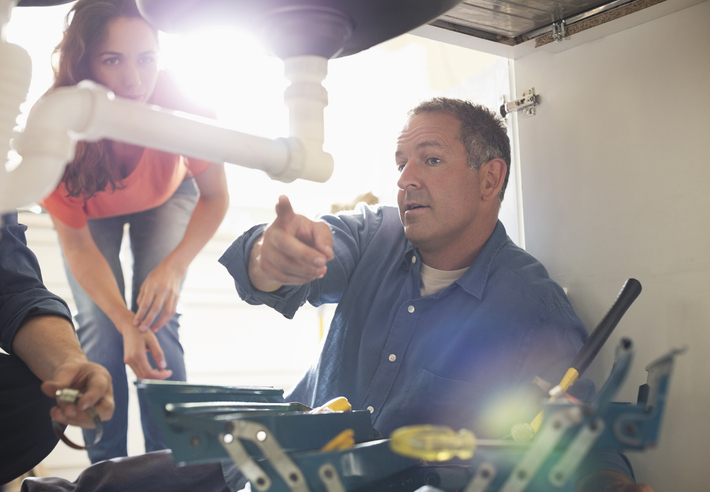11.07.2023
Plumbing 101: Decoding Your Home’s Plumbing System
Behind the walls and beneath the floors of your home lies an intricate network that ensures clean water flows in and wastewater flows out. Understanding the basics of your home’s plumbing system can empower you to identify issues, perform basic maintenance, and appreciate the importance of this vital infrastructure.
Components of a Home Plumbing System
- Supply Pipes: These pipes bring clean water into your home from the municipal water supply or a well. Materials vary, with copper, PVC, and PEX being common choices.
- Fixtures and Appliances: These include sinks, toilets, showers, bathtubs, water heaters, and appliances like dishwashers and washing machines that connect to the plumbing system.
- Drainage System: Wastewater from fixtures flows through drainpipes, ultimately connecting to the main sewer line or a septic tank, depending on your home’s setup.
Basic Functions of the Plumbing System
- Water Supply: Fresh water enters your home through the main supply line and is distributed to various fixtures via smaller pipes, ensuring a constant supply for daily use.
- Wastewater Drainage: Used water and waste are carried away through drainpipes, flowing to the main sewer line or septic tank for proper disposal or treatment.
Common Plumbing Fixtures
- Faucets: Controls the flow of water, found in sinks, bathtubs, showers, and outdoor hose bibs.
- Toilets: Collects and flushes away human waste through a trap and drainpipe connected to the sewage system.
- Water Heaters: Heats and stores hot water for various domestic uses, like bathing and washing.
Identifying Basic Plumbing Issues
- Leaks: Dripping faucets, visible water stains, or damp spots can indicate leaks in pipes or fixtures that require prompt attention.
- Clogs: Slow-draining sinks or toilets, gurgling sounds, or foul odours often signify clogs in drainpipes, necessitating clearing or cleaning.
Maintenance and Care Tips
- Regular Inspections: Check for leaks, drips, and unusual sounds periodically, ensuring early detection and prevention of larger issues.
- Preventive Measures: Use drain guards to catch debris, avoid flushing non-flushable items, and be cautious with grease disposal to prevent clogs.
Knowing When to Call a Professional
- Complex Issues: Problems with the main sewer line, extensive leaks, or major installations should be handled by licensed plumbers for safety and efficiency.
- Safety Concerns: Gas line issues or sudden drops in water pressure might indicate potentially hazardous situations requiring immediate professional intervention.
Empowering Homeowners with Plumbing Knowledge
Understanding the basics of your home’s plumbing system equips you to identify, and address minor issues, and appreciate the importance of regular maintenance. While DIY solutions can help in simple cases, it’s essential to seek professional help for complex or potentially hazardous plumbing problems.

